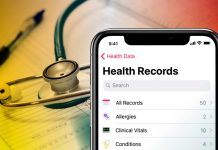Patient engagement technology is a crucial tool in modern healthcare, helping to improve patient outcomes and overall satisfaction. By using technology to connect patients to their healthcare providers, patients can take a more active role in their own care, leading to better health outcomes.
One of the primary benefits of patient engagement technology is that it improves communication between patients and healthcare providers.
For example, patient portals allow patients to access their health records, communicate with their healthcare providers, and schedule appointments. This can reduce wait times and improve the overall experience for patients.
Read: Benefits of Emergency Room EMR Software
Patient Engagement Technology
 The Importance of Patient Engagement Technology lies in creating a better patient experience and ensuring their loyalty.
The Importance of Patient Engagement Technology lies in creating a better patient experience and ensuring their loyalty.
Engagement is also closely related to empowerment. We are looking for informed Patient Engagement Technology for patients who understand their treatment, the options available and take proactive measures to maintain their health.
But this is easier said than done. Medical care requires one-to-one care, multiple caregivers, and a mass of data.
Related: Tips To Improve Patient Flow Through ER
6 Steps of Patient Engagement Technology
Another benefit of patient engagement technology is that it enables patients to track and manage their health in real time. For example, wearable devices can track physical activity and sleep patterns, while mobile apps can help patients manage chronic conditions such as diabetes or heart disease.
Healthcare providers can use this data to monitor patient’s progress and make informed treatment decisions. Patient engagement technology also helps to educate patients about their health and wellness.
For example, interactive educational tools and videos can help patients better understand their conditions and how to manage them. This can lead to better patient outcomes and increased satisfaction.
Fortunately, technology has made this considerably easier for us. We can devise a step-by-step comprehensive patient engagement policy with new gadgets, tools, and software.
Read: The Benefits of Remote Patient Monitoring
#1. Defining the goal
Before you start, you must spell out every detail of your policy. This is important in planning for every eventuality later. There are a few key points here:
Understand what you mean by patient engagement: Patient engagement is a comprehensive policy. But it would be best if you knew how far you want to take this.
Are you looking for an engagement policy where patients can make appointments, ask for prescription refills, and are encouraged to question or leave feedback?
Or are you looking for an even more engaged patient, who is proactive in taking care of their health, is encouraged to question the treatment, and is eager to take charge of their health and treatment?
The degree of engagement will impact the policies.
Read: How Big Data Improves Patient Outcomes
Effect on the organization’s current working: This policy will affect the entire organization.
But you need to identify the departments and services that will be impacted, particularly your staff, medical professionals (such as physicians/diagnosticians/surgeons, etc.), senior leadership, and the board of directors.
Find out or estimate the metrics: This is important in gauging your policy’s success and selling it to the board of directors when it comes!
Percentage of people currently using patient portals, number of organizations with similar policies and their impact, number of patients/appointments in a day, number of refills and follow-ups daily, etc.
Define the 5 Ws: Who (patients)? What (reduced costs/engaged patients)? Where (the organization or the website)? When (is the deadline)?
Read: Healthcare Application Development Trends
#2. Creating a culture of engagement
A patient engagement policy can only succeed with the full support of your people. Without them, it will, at best, be a half-hearted effort and, at worst, be an unfulfilled promise to your patients.
It would be best to meet each department separately, even those not directly impacted by the change, and send a detailed email about the vision and its benefits.
Engage and encourage feedback, but make it clear that this is irreversible. Invite experts and patient representative bodies to explain the benefits of patient engagement.
Read: AI is Leading To Groundbreaking Innovations in The World of EHRs
#3. Budget
Ultimately, money may well decide how much we can do. Patient engagement is less expensive than you may think. Several EHR vendors can build an engaging patient portal.
Technology such as wearable sensors can be trickier since your patients also need to invest. But the basics of patient engagement — a website, computers, and mobile may already be around.
#4. Identifying engagement tools and methodology
Several technological products help in patient engagement. Healthcare tech is one of the hottest subjects today, from launching a patient portal, EHR, mobile solutions, and innovative apps.
You can connect through emails, and social media, facilitate ePrescription, and remotely monitor patient health through cloud-based apps.
Today patient engagement also depends on the collaboration of multiple agencies, such as labs, pharmacies, and at-home nursing staff. Keep in mind that the engagement infrastructure must be within your budget.
Read: The Most Common Mistakes People Make With Pharmacy Billing
The next step should be to train your staff to work within this new regime. Select a methodology that requires a short learning curve and works with popular tools.
This will make its adoption easier for both the staff and the patients. So the key elements of the desired methodology are:
- Ease of use
- Compatible with running systems
- Short learning curve
- Cloud-based
- Mobile-enabled
- Scalable and flexible for future changes and growth
#5. Implementation
Good planning makes for a smooth implementation! Launching a patient engagement policy will impact your entire organization, so it must be planned. Who must schedule training to cause the least disruption?
Similarly, the transfer of records from paper to electronics must occur in a foolproof, least disruptive manner.
#6. Review
Finally, seek feedback from your patients through surveys and questionnaires. Ask the regulars their opinion about the changes, how it has impacted them, and what more you can do to improve.
Review your metrics every half-yearly to see how far you have come. It is important to revisit, identify the lacunae and implement changes that sound good.
- Tips for Improving Patient Flow Through the ER
- Why Some Addiction Rehabilitation Treatment Facilities Do Not Work
- The Benefits of Memory Care Apartments for Aging Seniors
In conclusion, patient engagement technology is vital for improving healthcare quality and empowering patients to take a more active role in their own care.
By improving communication, tracking health data, and educating patients, this technology can help to improve patient outcomes and overall satisfaction.
For More Latest Tech Updates and Information about “Patient Engagement Technology,” Visit CRECSO NEWS Magazine.












